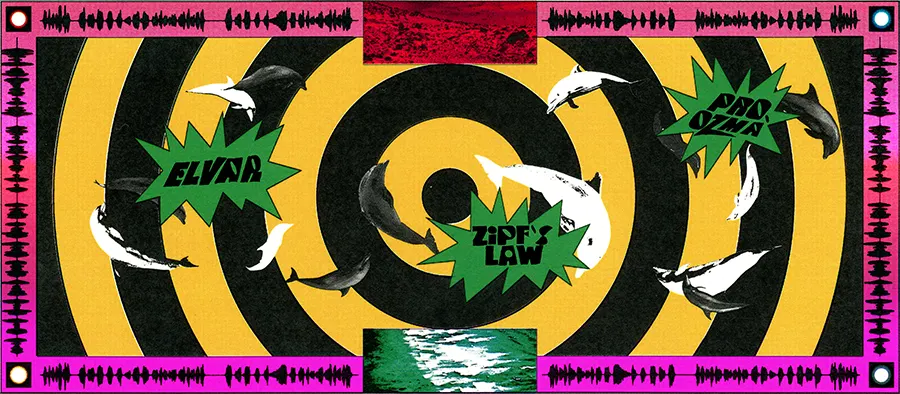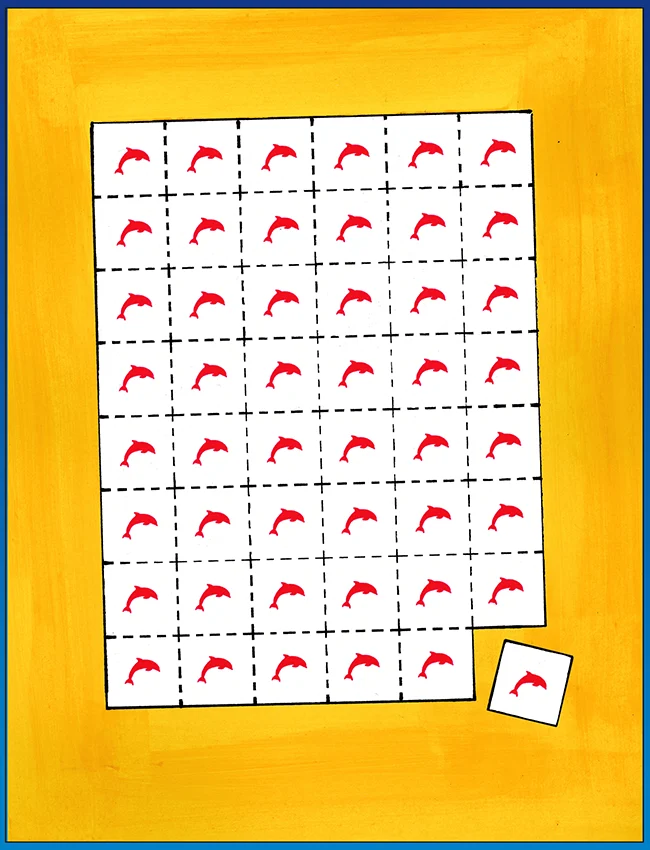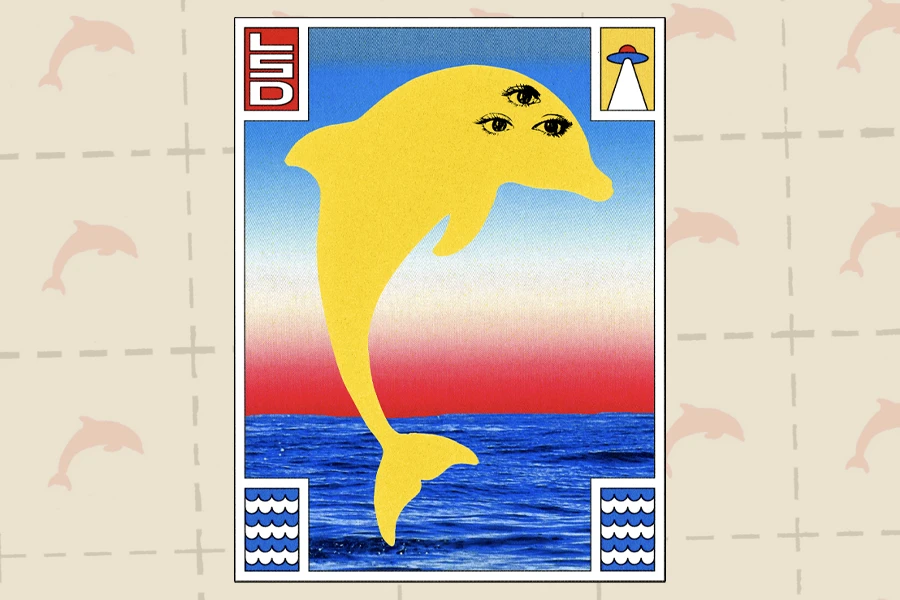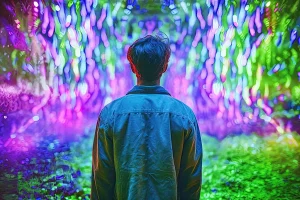*This article originally appeared in DoubleBlind Issue 6.
John Cunningham Lilly was perhaps one of the most far-out researchers to experiment with psychedelics. Impelled by an ever-burning desire to push the frontiers of human knowledge, Lilly’s career spanned eclectic heights: He was a physician, neuroscientist, psychoanalyst, consciousness researcher, and inventor all in one.
Both a controversial and celebrated figure, dismissed as a madman and revered as a genius, Lilly is perhaps best known for his invention of the isolation tank, his pioneering research with dolphins and interspecies communication, and his extensive self-experimentation with psychedelic substances.
In 1954, Lilly invented the isolation tank, sometimes referred to as a flotation tank, as a means of sensory deprivation. Lilly conceived of the idea to test a question that was plaguing scientists at the time: Could the brain stay awake on its own, or does it need external stimulation from an outside reality to remain conscious?
READ: LSD: Everything You Should Know
Far from sensory deprivation, the isolation tank was able to induce a multiplicity of altered states of consciousness, ranging from waking dreams to out-of-body experiences to encounters with alternate dimensions. It was during Lilly’s long periods spent in isolation tanks that he began to wonder what kind of creatures floated 24 hours a day. Lilly shared this reflection with his friend Pete Shoreliner, who suggested, “Dolphins. They’re available. Go down to the Marine Studios in Florida.”
Mesmerized by their large brain size, Lilly first set out to continue his neuroscientific research with dolphins. He came to believe they were a superior form of intelligence and that they represented exciting possibilities for interspecies communication.
“Through dolphins, we may see us as others see us,” wrote Lilly, feeling that establishing communication with dolphins was an important step in the evolutionary development of humanity. Lilly even went as far as to propose a Cetacean Chair at the United Nations, foreseeing a future in which marine mammals might wish for representation in global affairs.

Lilly’s theories around interspecies communication had special significance for astronomers like Carl Sagan who felt that such research could help set a precedent for establishing communication with extraterrestrial life forms. This helped Lilly secure financial backing from NASA and other government agencies to build a lab in the Caribbean in 1963.
How to Grow Shrooms Bundle
Take Both of Our Courses and Save $90!
Lilly’s seaside research center in the Virgin Islands was a partially flooded house, known as the Dolphin House, built with the purpose of dolphin-human cohabitation. In the summer of 1965, Lilly’s assistant, Margaret Howe Lovatt, conducted a famous experiment in which she spent several months cohabiting with a young dolphin named Peter and trying to teach him to speak English. However, much of the benefit of the ten-year-long experiment was derailed by a scandalous news story in Hustler exaggerating Lovatt’s decision to sexually relieve Peter in order to help him maintain focus on their language lessons.
READ: Animals on Drugs—Humans Aren’t the Only Ones Who Seek Out Altered States

Needless to say, Lilly never succeeded in his pursuits of teaching dolphins English and cracking the interspecies communication divide. Somewhere along the way, he began to ingest LSD, and that’s when things hit a new level of weirdness. A fellow at the National Institute of Mental Health, Lilly was one of few people who could access LSD legally, with direct access to the chemical from Sandoz laboratories, the employer of famed LSD inventor Albert Hofmann and the company responsible for providing all the early psychedelic researchers with access to this potent synthetic. At first, Lilly conducted extensive self-experimentations, tripping on LSD inside his isolation tank.
Soon, he decided to combine his psychedelic experiments with his dolphin research, ingesting LSD in a specially designed eight-foot cube above the facility and attempting to communicate with dolphins telepathically. He came to believe that the dolphins were in fact “programming” his trips. Later still, he gave the dolphins themselves acid to see how it would affect their communication, finding that it made the dolphins more vocal than usual.
Beyond their vocalizations, one of the most notable results involved a dolphin named Pam that had previously been rescued after being shot in the tail with a spear gun. As a result, Pam was traumatized by humans and would not come close to them at all. However, on LSD, Pam became more curious and sociable towards them.
As Lilly’s experimentations with psychedelics grew, he became increasingly reckless with his research methods, and funding for Dolphin House dried up. Ultimately, he had to ship the dolphins back to Florida whereupon they were kept in small enclosures. Peter, after being separated from Lovatt, reportedly committed suicide when he refused to surface for air.
Upon returning to the States, Lilly decided to focus on his own writings and experimentations in consciousness. In the early Seventies, his writings and interests became increasingly opaque when he began combining his sessions in the sensory deprivation tank with ketamine, or as he preferred to call it, “Vitamin K.”
Perhaps overcommitted to understanding the inner realities opened up by ketamine, there was a point at which he ingested 50 milligrams, every hour on the hour for 22 hours a day for three weeks. Some might say that Lilly was addicted to ketamine for a time, however, he justified his use of it through his research on it, stating that, “Any good research is obsessive and compulsive.”
It was in a ketamine vision that he came to believe in the “Solid State Intelligence,” a malevolent entity that would arise from human computational systems and evolve into an autonomous bioform bent on destroying humanity. He also became convinced of the existence of a hierarchical group of cosmic entities which he referred to as the “Earth Coincidence Control Office,” or E.C.C.O., part of a much larger cosmic institution, steering the long-term coincidences of his life, fatefully guiding him in specific directions.
An avid explorer of inner space, Lilly passed away in 2001, at the age of 86, from heart failure. In spite of his failures and unorthodox research methods, Lilly’s contributions to both science and psychedelics have left a permanent imprint on modern culture. His prolonged sessions in his sensory deprivation tank with psychedelics served to shape the narrative of the 1980’s film Altered States, and he was undoubtedly the inspiration behind the Sega Genesis game Ecco the Dolphin, and the Flipper series. Perhaps more importantly, his work with dolphins changed the public perception of marine creatures, laying the foundation for the Marine Mammal Protection Act of 1972, the first act of the United States Congress to call specifically for an ecosystem approach to wildlife management.
This artwork, created by Salvatore La Rosa, was originally made for a story written by Daniel Oberhaus for supercluster.com

DoubleBlind is a trusted resource for news, evidence-based education, and reporting on psychedelics. We work with leading medical professionals, scientific researchers, journalists, mycologists, indigenous stewards, and cultural pioneers. Read about our editorial policy and fact-checking process here.

DoubleBlind Magazine does not encourage or condone any illegal activities, including but not limited to the use of illegal substances. We do not provide mental health, clinical, or medical services. We are not a substitute for medical, psychological, or psychiatric diagnosis, treatment, or advice. If you are in a crisis or if you or any other person may be in danger or experiencing a mental health emergency, immediately call 911 or your local emergency resources. If you are considering suicide, please call 988 to connect with the National Suicide Prevention Lifeline.



